'A different planet': Snorkel into 3,000-year-old underwater forest at Oregon's Clear Lake
As I sat on the gunwale of an aluminum rowboat off the north bank of Clear Lake, I went through a mental checklist before diving in the frigid 40-degree water.
Wetsuit, check.
Hood, gloves and booties, check.
Weight belt, fins and mask. Good to go.
“Alright,” I said to two friends who spent the last few minutes folding, tucking and zipping me into the skintight neoprene, “time to get cold.”
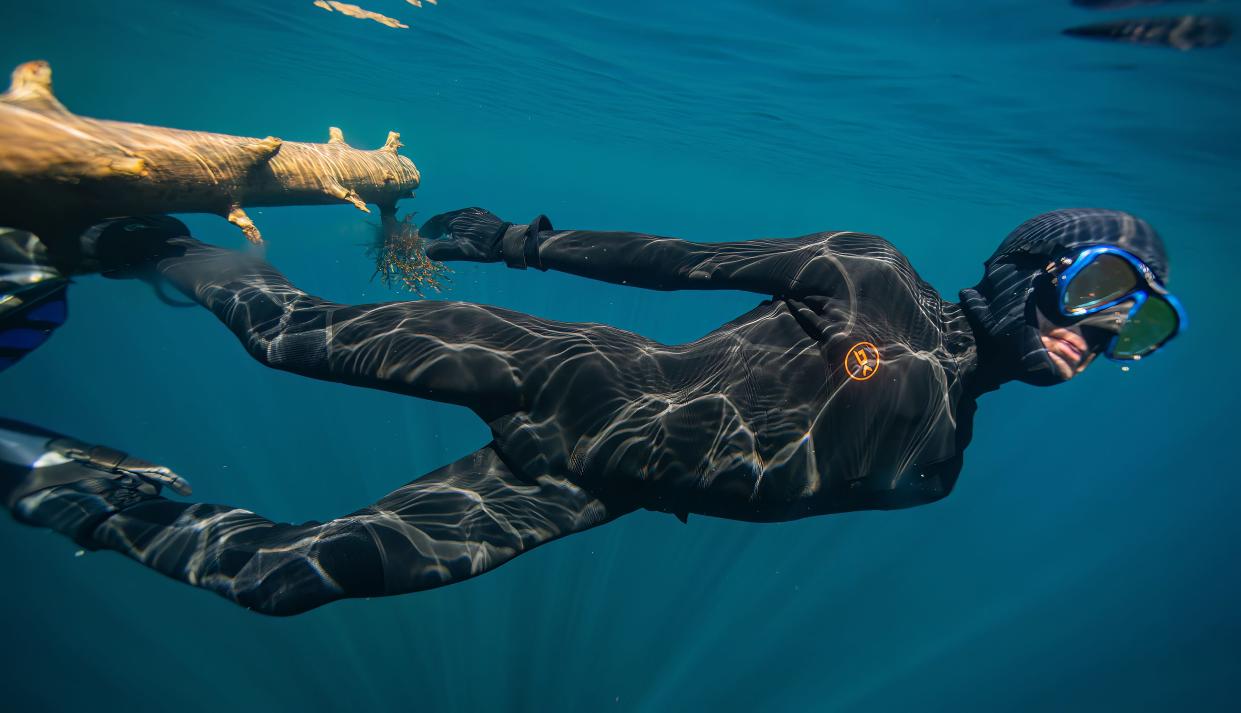
With my hand held on my mask ensuring it didn't fly off upon entry, I leaned back and splashed into a turquoise world among 3,000-year-old petrified trees.
After spending my childhood snorkeling in the tropical water of the Florida Keys, I thought I knew what clear water looked like. But nothing I’ve seen compares to Clear Lake's hundreds of feet of visibility. The crystalline water, views of sunken forests and varying depths make the lake located in the Central Cascade Mountains east of Eugene a hotbed for scuba and free divers in the western U.S.
"Clear Lake looks like you're diving on a different planet," said Shelby Powelson, whose family has owned and operated Aquatic Sports in Portland since 1966 and leads divers on annual trips to the lake.
But it's no simple thing to explore a different planet.
What makes Clear Lake so interesting?
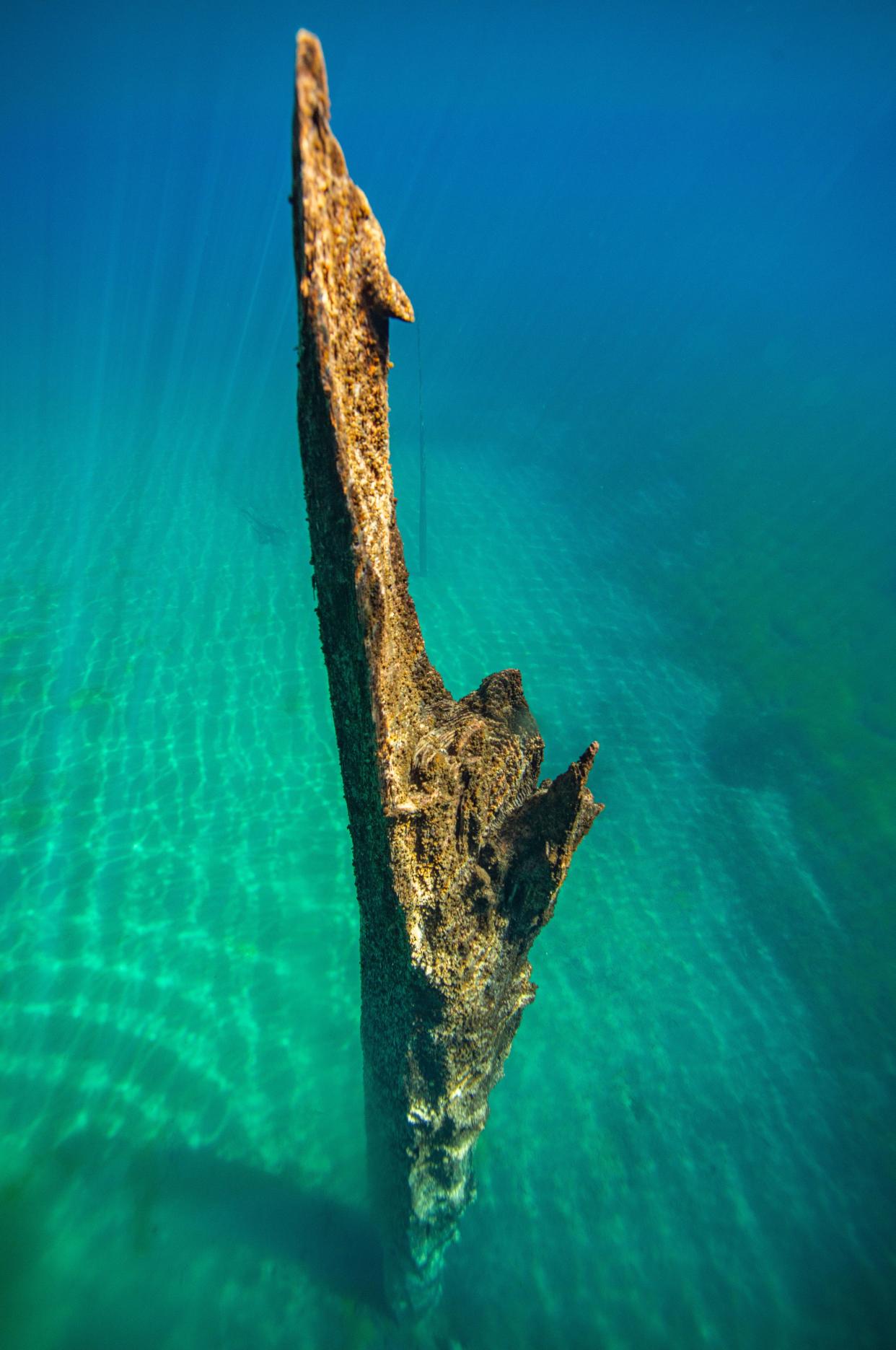
The chemical makeup of Clear Lake allows it to live up to its name, with over 100 feet of visibility underwater, said Powelson.
About 3,000 years ago, lava from an eruption of Sand Mountain flowed through what is now Willamette National Forest, decimating trees until it hit the cool waters of the McKenzie River. The lava hardened in place, causing a clog in the river’s flow and creating what is now Clear Lake.
The surrounding forest floor was flooded and preserved in the near freezing waters, which stay between 38 and 45-degrees year-round. With the right gear — whether scuba or snorkel — you can swim through a sunken forest from thousands of years ago.
Minimum Gear to explore Clear Lake
There are two ways to explore Clear Lake's depths — scuba or snorkel. I went with the latter, mainly because it's easier and cheaper. I also didn't have a couple of thousand dollars' worth of gear and no formal training on altitude or drysuit scuba diving.
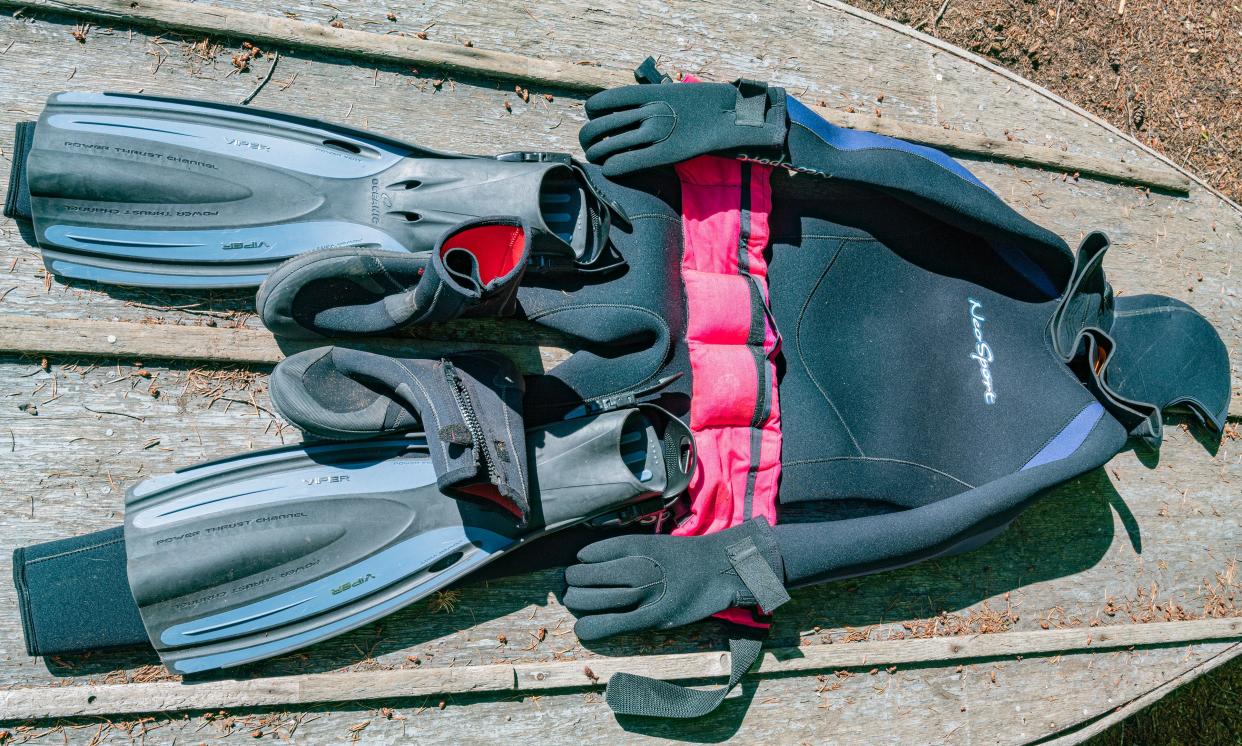
However, even to snorkel requires experience and the right equipment. Here is what I used:
Full 7/5mm wetsuit: Insulation and thermodynamics to keep the body warm. Any suit 5mm and above will keep you comfortable.
5mm neoprene dive hood, gloves and booties: Any unnecessary skin exposure to the water results in the loss of warmth. Give your body heat nowhere to go with full neoprene coverage.
Weight belt: With a wetsuit comes extra buoyancy. Wearing a weight belt counteracts the floatation, helping you dive deeper for an up-close look of a sunken tree.
Fins: Any properly fitting pair will do.
Mask: How else could you see the 100-foot visibility? Any dive mask works if it seals properly to the face. Leaks are no fun in 40-degree water.
“I recommend people head to a dive shop near them and make sure they have everything,” Powelson said. “Try out the gear in some kind of pool, make sure it’s comfortable and functioning the way that they need.”
'The biggest swimming pool in the world'
We rented a small rowboat, loaded up gear and began our voyage north from the docks of Clear Lake Resort — ready to swim in the depths of the McKenzie River's headwaters.
First, we had to find the spot.
The max depth of Clear Lake is 175 feet. Armed with just a snorkel, I stayed north of the Clear Lake Resort, where the water doesn’t get deeper than 70 feet. Not that I could dive anywhere near that depth. There are plenty of interesting sunken tree spots between 10 and 20 feet down.
An added perk of Clear Lake's visibility is that the bottom can be seen from the surface — eliminating guesswork while spotting the scattered trees and swim spots from the deck of our rowboat.
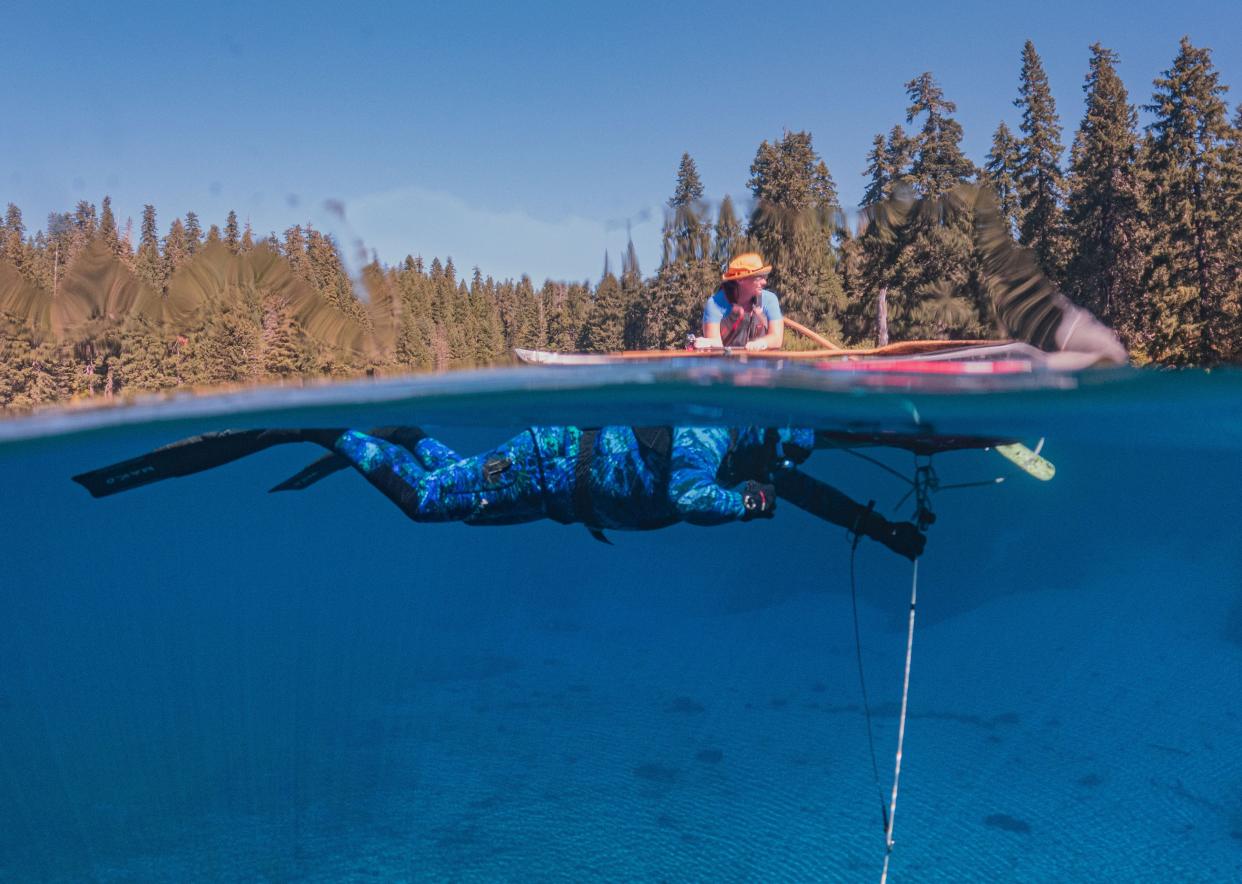
Convenience and consistent visibility are why free divers flock to Clear Lake, according to certified freediver and retired Washington Department of Fish and Wildlife dive researcher Don Rothaus.
Rothaus uses Clear Lake as a practicing ground for bigger dives.
"On any given day at Clear Lake, you're not going to be disappointed," he said. "It's dependable to have at least 10, 15 or 20 meters of visibility. You don't see that anywhere in the western United States that I know of. It's so convenient. From shore, you can basically swim out 100 or 200 yards and you're in a massive swimming pool. It's like the biggest swimming pool in the whole world."
From the rowboat, we eyed a cluster of three trees 10 yards off the north bank. The first spot was found.
I was ready for a dip.
Splashing into a cold underwater world
After rowing a boat full of camera gear and two buddies in the summer sun, I began to sweat in my wetsuit and was looking forward to the sensation of cold-water seeping through the neoprene.
I took a deep breath and rolled backward off the boat.
As my back broke the water's surface, my view of summer sky turned to bubbles. The ambient noise of songbirds and fellow lake visitors enjoying their day suddenly turned to silence.
I was suspended in a sunken forest graveyard thousands of years old.
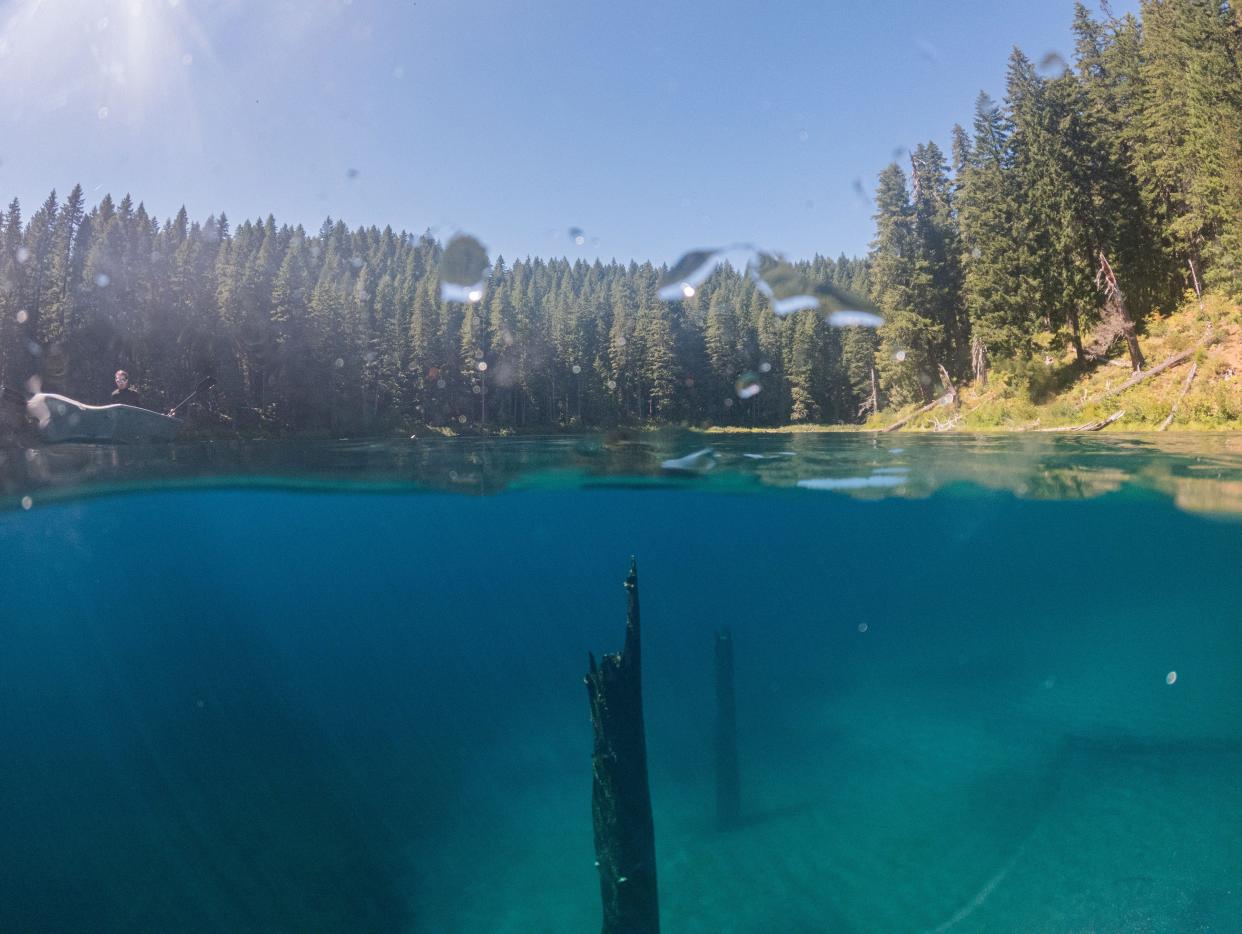
The first stop on the underwater mini expedition was three sunken trees near the northern bank of the lake. The three 10-foot trunks jut up from the white bottom, natural pillars of the forest that once was.
My first two dives down were short. It had been a few years since I swam in cold water. I didn't know what to expect and had to breathe through the initial hyperventilation that comes with exposure to cold. Within a minute, my lungs and the layer of water between me and the neoprene had warmed up. That's when it got fun.
For 10 minutes, I dove down photographing the trees from near and far, enjoying the time I spent underneath the surface of the high-altitude lake.
"How are you feeling?" one of my friends asked from the warmth of the boat.
"Not too terribly cold," I said.
“Who is your favorite UFC fighter?”
Back on dry land, before the dive, I told my safety buddies to ask me random questions to make sure I was thinking clearly, and my speech wasn’t slurring — two of the initial signs of hypothermia.
“Dustin Poirier obviously," I answered quickly.
I was feeling great and ready to continue exploring in a different area.
With the weight of bodies and gear rearranged to prevent the boat from capsizing, I grabbed the aluminum siding, finned hard and pressed myself up and over the gunnel. I was back in the boat, basking in the sun and warming up for the next spot.
The second dive location was at a horizontal tree a hundred yards to the south along the west bank. It hung suspended a few feet below the surface. The browns, tans and greens from the waterlogged wood popped with contrast from the deep blue water.
"How are you?" I asked a paddle boarder who was giving what seemed like a puzzled look as I gulped air between dives.
"I'm great. How about you?" she asked.
“Can’t complain — It’s a Friday at the lake,” I said before going back below the surface for another look at the horizontal tree.
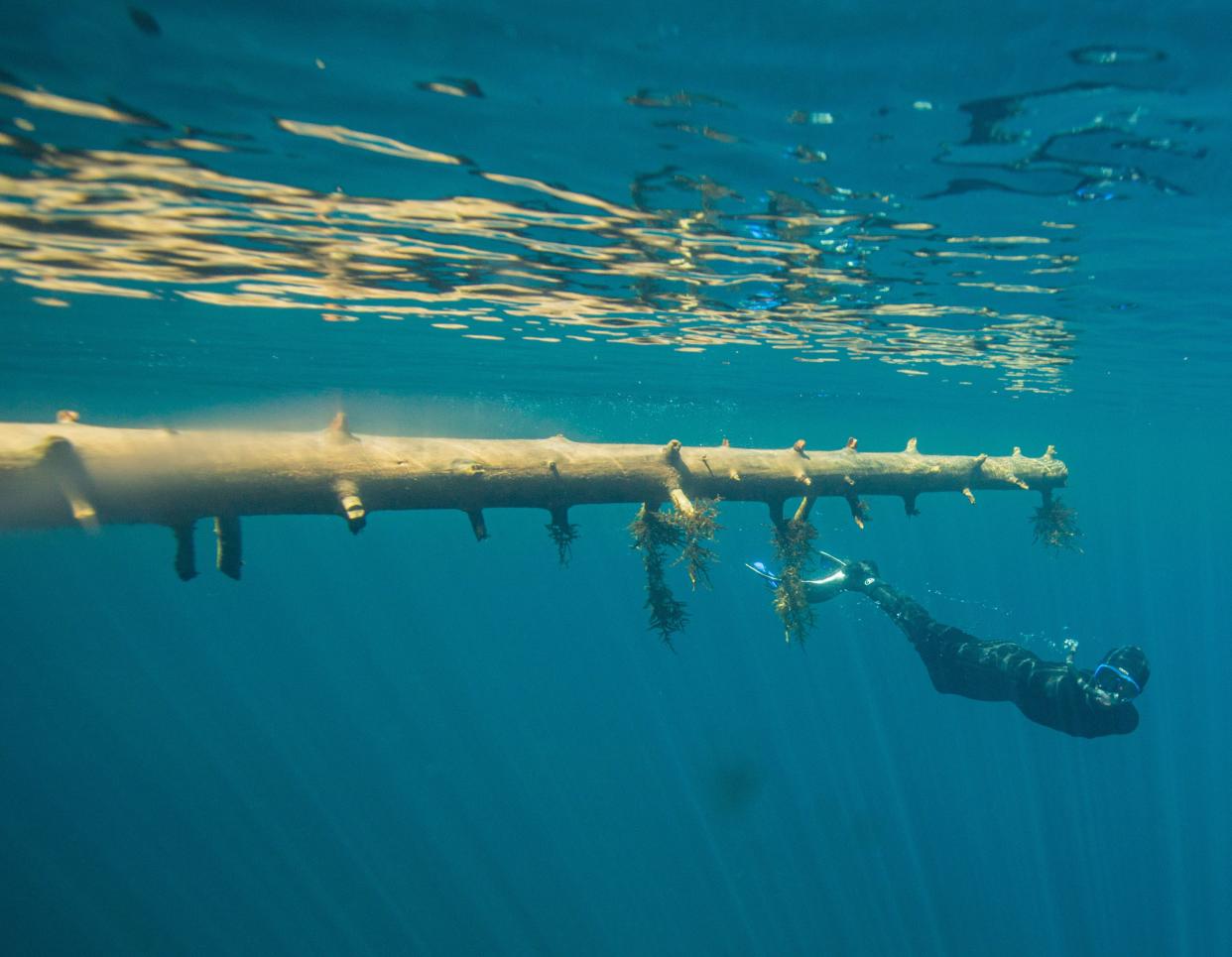
Dubbed "the leaning timber of Clear Lake," the third spot was just north of the boat launch. At a 60-degree angle, the old trunk rises from the grassy green bottom. The tree’s jagged tip sat just below the water. Maybe it was the cold water, but I couldn’t help but imagine how the tree would make a perfect toothpick for a giant.
The fourth spot is within 20 yards of the leaning timber. The swim between them, along the east bank across from the resort’s dock, is just as interesting.
Spot four was full of more recently fallen trees, branches and brush along the shallow bottom. This was a promising location for spotting fish, although I didn’t see any.
After four dives spots and hours in the cold water, I was ready for a hot coffee, a snack and a comfortable sweatshirt.
With the right gear, a safety buddy and a decent pair of lungs, Clear Lake can make for an awesome freshwater snorkeling trip in the biggest swimming pool in the world.
Signs to watch for hypothermia
Even with all the correct attire, hypothermia is still a real possibility and should not be taken lightly.
Hypothermia is a medical emergency which occurs when the body loses heat faster than it can produce, causing the core temperature to drop below 95 degrees, according to the Mayo Clinic.
Some signs and symptoms to look out for include:
Shivering
Slurred speech
Slow and shallow breathing
Weak pulse
Clumsiness or lack of coordination
Drowsiness
Low energy
Confusion or memory loss
Loss of consciousness
Victims of hypothermia are typically unaware of the gradual onset. Constant verbal check-ins with a safety buddy on the boat are critical. To ensure clear thinking, my safety buddies asked simple multiplication or trivia questions.
If in a wetsuit, your body should produce enough heat to take care of itself. Heat production in a cold environment requires extra fuel in the form of calories and hydration.
Snorkel in Clear Lake
In a nutshell: A crystal clear lake that make for a fun underwater exploration with the proper gear and preparations.
Depth: 175 feet max
Drive time from Salem/Eugene: Slightly over an hour and a half from Salem and Eugene
Fees: There is a parking fee and renting a rowboat is highly recommended. A boat costs $20 an hour or $40 for the day.
Gear rentals: Gear can be rented in the Mid-Valley at Eugene Skin Divers Supply, Salem Scuba or Aquatic Sport in Portland.
Directions fromEugene: Head east on Oregon Route 126, winding along the McKenzie River for 75 miles, before turning right into the Clear Lake Resort on NF-775.
From Salem: Head east on Oregon Route 22/Santiam Highway SE for 84 miles and continue onto Oregon Route 126 E for 5 miles before turning left into Clear Lake Resort on NF-775.
Keep the lake safe: Try to not disturb the bottom of the Lake. The lack of current and moving water means the kicked-up silt on the bottom could hang suspended in the water, ruining the visibility for months.
Elliott Deins is an outdoors journalism intern for the Statesman Journal. He can be reached at edeins@salem.gannett.com
This article originally appeared on Salem Statesman Journal: Clear Lake in Oregon offers snorkeling in underwater forest
